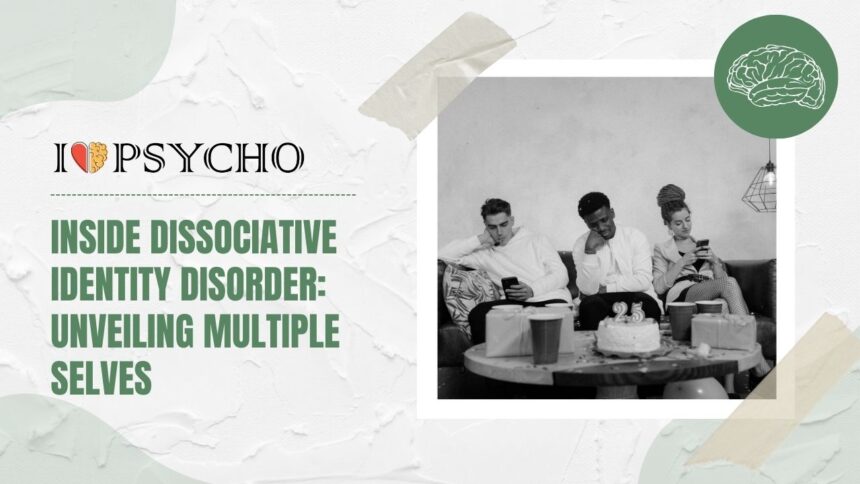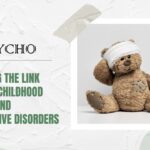Step into the intriguing world of Dissociative Identity Disorder (DID), where one individual can harbor multiple selves within. Imagine a mind fragmented, each self-holding its own identity, memories, and behaviors. In this blog post, we will delve deep into the complexities of DID – from its history and controversial origins to the signs and symptoms that manifest. Join us on a journey to unravel the mysteries surrounding this unique yet often misunderstood disorder.
Understanding Dissociative Identity Disorder (DID)
Understanding Dissociative Identity Disorder (DID) involves grasping the concept of one individual possessing distinct and separate identities, often referred to as alters. These alters can vary in age, gender, personality traits, and even physical abilities. DID is rooted in a complex mechanism of dissociation – a coping strategy developed during early traumatic experiences to shield the individual from overwhelming emotions and memories.
Individuals with DID may experience memory gaps, amnesia between switches of alters, or find themselves in unfamiliar places without recollection of how they got there. The coexistence of these different selves within one person can be both bewildering and distressing for those living with this disorder.
While some may perceive DID as a rare phenomenon or even question its validity, it is crucial to approach this condition with empathy and understanding. By shedding light on the intricacies of DID, we can foster compassion and support for those navigating the challenges that accompany having multiple selves sharing one body.
The History and Controversy Surrounding DID
The history of Dissociative Identity Disorder (DID) dates back to the late 19th century when it was first described as “multiple personality disorder.” Over the years, understanding and acceptance of DID have evolved, yet controversy still surrounds this complex condition. Some critics question the validity of DID, attributing it to suggestibility or iatrogenesis.
In recent decades, advancements in psychology and neuroscience have shed light on the underlying mechanisms of DID, highlighting its rootedness in severe trauma. Despite growing recognition within the mental health field, misconceptions persist about DID due to sensationalized media portrayals.
The debate around DID continues to spark discussions among professionals and advocates alike. As research progresses and awareness grows, a more nuanced understanding of this disorder emerges. It is crucial to approach discussions about DID with empathy and an open mind, recognizing the diverse experiences of those living with multiple selves.
Signs and Symptoms of DID
Living with Dissociative Identity Disorder (DID) can be complex and challenging. People with DID may experience gaps in memory, finding items they don’t recall purchasing or not recognizing people they’ve met before. These episodes are known as dissociative amnesia.
Individuals with DID might also exhibit distinct personalities, each with its own traits, preferences, and behaviors. Switching between these identities can happen suddenly and without warning.
Other signs of DID include feeling detached from one’s body or emotions, experiencing depersonalization or derealization. It’s like watching oneself from the outside or feeling like the world isn’t real.
Furthermore, individuals struggling with DID may frequently encounter mood swings, anxiety, depression, self-harm tendencies, substance abuse issues due to difficulties in coping with their multiple selves. Seeking professional help is crucial for proper diagnosis and treatment planning.
The Role of Trauma in Developing DID
Trauma plays a significant role in the development of Dissociative Identity Disorder (DID). For individuals with DID, trauma often begins in childhood and can be repeated over time. The mind copes by creating distinct identities or “alters” to compartmentalize painful memories and emotions.
These alters may have unique characteristics, ages, names, and even voices. They serve as a defense mechanism against overwhelming feelings associated with past traumatic events. Each alter may hold different memories or aspects of the person’s identity.
The link between trauma and DID is complex but crucial to understand for effective treatment. Therapy aims to help patients process their traumatic experiences, integrate their alters, and create inner harmony.
It is essential for those living with DID to seek professional help from therapists experienced in treating dissociative disorders. Healing from trauma takes time and patience but is possible with the right support system in place.
Treatment Options for DID
Treatment for Dissociative Identity Disorder (DID) often involves a combination of therapy approaches tailored to each individual’s needs. Psychotherapy is the primary form of treatment, with a focus on addressing trauma, building coping skills, and integrating different identities. Cognitive-behavioral therapy helps individuals recognize and change harmful thought patterns and behaviors. Eye movement desensitization and reprocessing (EMDR) can also be helpful in processing traumatic memories.
Medication may be prescribed to manage symptoms such as depression or anxiety that commonly coexist with DID. However, medication alone is not considered a comprehensive treatment for DID. Family therapy can help improve communication and support systems within the individual’s social network.
Support groups and peer networks provide valuable opportunities for individuals with DID to connect with others who understand their experiences. It’s essential to work closely with mental health professionals to develop a personalized treatment plan that addresses all aspects of living with DID effectively.
Living with Multiple Selves: Personal Experiences
Living with Dissociative Identity Disorder (DID) can be a complex and challenging journey. Individuals who experience DID may find themselves navigating life with multiple selves, each with unique characteristics and memories. It’s like having a cast of characters within oneself, each vying for attention and control at different times.
Some individuals report feeling disconnected from their own identity, as if they are watching their lives unfold from the sidelines. Switching between alters can happen suddenly and without warning, leading to moments of confusion or lost time. Each alter may have its own name, age, gender, voice, and mannerisms – creating a rich tapestry of internal experiences.
Despite the challenges that come with living with multiple selves, there can also be moments of connection and understanding among alters. Some individuals describe developing relationships with their alters over time, learning to communicate effectively and support one another in times of need.
Living with DID means embracing the complexities of one’s inner world while striving for harmony and integration among all parts of the self.
Debunking Myths and Misconceptions about DID
There’s a common misconception that individuals with Dissociative Identity Disorder (DID) are faking their symptoms. This belief undermines the real struggles faced by those living with this complex mental health condition.
Another myth is that DID is solely caused by watching movies or reading books about multiple personalities. In reality, DID stems from severe trauma experienced during childhood, serving as a coping mechanism to protect the individual from overwhelming pain.
It’s important to understand that each alter within a person with DID is not a separate individual like in the movies. Instead, these alters represent different facets of one person’s identity, fragmented due to past traumatic experiences.
Dispelling myths and educating ourselves about DID can help create a more supportive and understanding environment for those navigating life with this disorder.
Finding Acceptance and Support within the Community
Navigating life with Dissociative Identity Disorder (DID) can feel isolating, but finding acceptance and support within the community can be a game-changer. Connecting with others who understand your experiences can bring a sense of validation and belonging that is truly invaluable.
Online forums and support groups offer safe spaces for individuals living with DID to share their stories, seek advice, and receive encouragement from peers who walk a similar path. These communities foster empathy, understanding, and compassion, creating a network of support that can make all the difference on tough days.
Attending therapy or group sessions specifically tailored for those with DID can also provide an additional layer of support. In these environments, individuals can explore their identities openly without fear of judgment while learning coping strategies from professionals trained in treating dissociative disorders.
By actively seeking out opportunities to connect with others who share similar struggles, individuals with DID can cultivate relationships that empower them to embrace their multiple selves fully. The journey towards self-acceptance and understanding is undoubtedly challenging but having a supportive community by your side makes it less daunting.
Conclusion
Understanding Dissociative Identity Disorder is crucial to providing support and acceptance for those living with this complex condition. By debunking myths and misconceptions, we can create a more empathetic and inclusive environment for individuals with DID. It is important to recognize the role of trauma in the development of DID and explore various treatment options that can help manage the symptoms effectively.
Living with multiple selves is a unique experience that requires compassion, understanding, and patience from both individuals themselves and their support system. Finding acceptance within the community of fellow DID survivors can provide a sense of belonging and validation that is essential for healing.
As we continue to educate ourselves about Dissociative Identity Disorder, let us strive to foster a culture of empathy, respect, and support for all those affected by this condition. Together, we can break down stigma, promote awareness, and advocate for better resources and care for individuals living with multiple selves.









